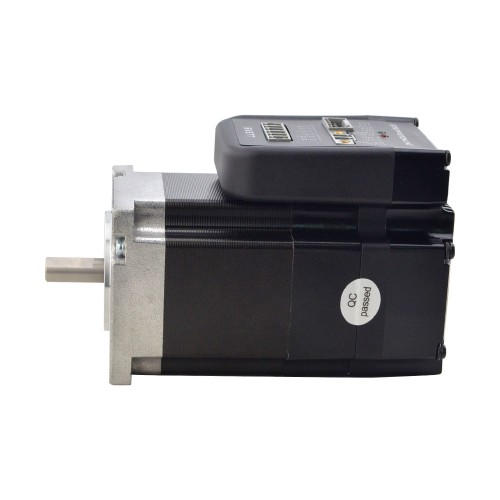Servo motor positioning control mainly includes three methods: position control, speed control and torque control, each of which has different characteristics and application scenarios.
Servo motor positioning control is a very important part in the field of industrial automation. It involves precise control of motor position, speed and torque. Below we will discuss in detail the main methods of servo motor positioning control.
- Position control
Position control is the most commonly used positioning control method for servo motors. It achieves accurate arrival at the target position by precisely controlling the rotation angle of the motor. Position control usually uses an encoder to detect the actual position of the motor and compares the actual position with the target position. The controller calculates the difference and outputs the corresponding control signal so that the motor can accurately reach the target position.
Position control has the characteristics of high precision and high reliability, and is especially suitable for application scenarios that require precise positioning and repeated positioning, such as CNC machine tools, robots, and automated production lines.
- Speed control
Speed control is another important positioning control method of servo motor. It mainly focuses on the rotation speed of the motor, and achieves rapid arrival at the target position by controlling the speed of the motor. Speed control usually uses a speed sensor to detect the actual speed of the motor and adjust the control signal according to the target speed so that the motor can maintain a constant speed.
Speed control has the characteristics of fast response and good dynamic performance, and is suitable for application scenarios that require fast response and precise speed control, such as automated handling systems, conveyor belts on production lines, etc.
- Torque control
Torque control is a relatively special method of servo motor positioning control. It mainly focuses on the output torque of the motor, and achieves precise control of the load by controlling the output torque of the motor. Torque control usually uses a torque sensor to detect the actual output torque of the motor, and adjusts the control signal according to the target torque so that the motor can output appropriate torque to drive the load.
Torque control has the characteristics of accurately controlling the load and preventing overload. It is especially suitable for application scenarios that require precise control of load torque, such as precision machining, assembly and testing.
In addition to the above three main positioning control methods, servo motors can also be combined and optimized according to specific application requirements to achieve more complex positioning control functions. For example, high-precision trajectory tracking can be achieved by combining position control and speed control; smooth driving of the load can be achieved by combining torque control and speed control.
In short, servo motor positioning control is a complex and important technical field, and different control methods have their own characteristics and application scenarios. In practical applications, we need to select the appropriate control method according to specific needs and conditions, and optimize and adjust it to achieve the best positioning control effect.




